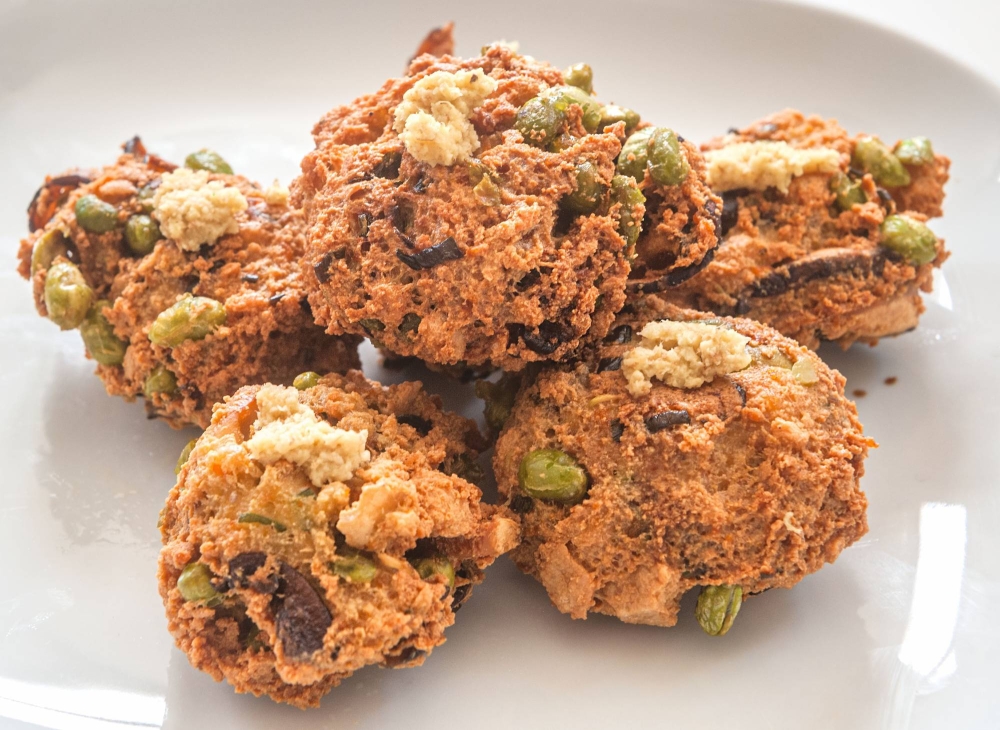Considering how common tofu is in Japanese cuisine, you might expect tofu dishes to be pretty standard no matter where you go in the country. That’s not the case for this light and fluffy deep-fried dumpling.
People in the Kansai region usually call this dish hiryōzu or hirōsu, while people in the Kanto region call it ganmodoki. Nowadays, both names refer to the same dish with a few variations, but it hasn’t always been that way. Meaning “like wild goose,” ganmodoki arose during the Edo Period (1603-1868) as a dish within shōjin ryōri (traditional vegetarian Buddhist cuisine) — ground konnyaku (devil’s tongue) and mixed vegetables fried to taste, it was said, like goose. On the other hand, the name “hiryōzu” originates from the Portuguese word “filhos,” which refers to a type of sweet, fried, flower-shaped fritter.
Whatever you call these tasty dumplings, feel free to mix any finely cut vegetables into the tofu base besides the ones in the recipe. For a non-vegan twist, you can use an egg as a binder instead of grated yamaimo (yam). Don’t be too worried if the dumplings turn out a little malformed, but for visually appealing dumplings, drain the tofu for longer or add more starch to the mix.

